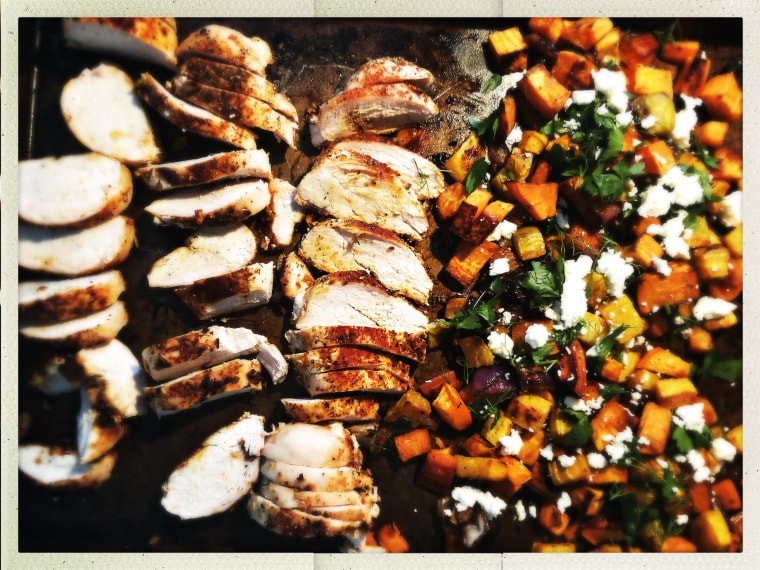Juggling work, kids, and a social life can leave you staring blankly into the fridge at dinner time. But getting healthy, delicious food on the table doesn’t have to be a daily battle. As a mom myself, I understand the struggle. This guide shares my foolproof meal planning process to help you reclaim your evenings and connect with your family over home-cooked meals.
My Foolproof Meal Planning Process
This is a detailed breakdown of what’s worked for my family for years. Adapt the day of the week and process to suit your schedule, but the core remains the same:
- Assess Your Pantry: On a consistent day each week, take stock of what you already have.
- Build Your Meal Plan: Based on your pantry staples and weekly schedule (sports practices, meetings, etc.), plan your meals for the week.
- Create a Shopping List: List all the missing ingredients you need to execute your meal plan.
- Prep in Advance: Prepare parts of your dinner the night before or the morning of—never during the dinner rush.
- Post the Plan: Display your weekly meal plan, including basic cooking instructions for that night’s dinner. This empowers older kids, spouses, or babysitters to start dinner at a reasonable hour.
Go-To Meal Ideas for Busy Moms
Easy-to-Cook Proteins
Consider simple proteins such as grilled chicken or broiled salmon.
If your household has food allergies or sensitivities, stick to basics. I buy organic meat in bulk when it’s on sale and portion it immediately. Use kitchen shears to divide salmon fillets or ground meat into freezer bags, add marinade, and label. Thaw it overnight in the fridge for a quick sauté or grill at dinner time.
While the goal is simplicity, variety is key. Try to incorporate one new recipe each week. Websites like NomNomPaleo.com and TheSpruceEats.com can provide inspiration.
Slow Cooker Wonders
Embrace the slow cooker! Beyond chilis and stews, slow cook a whole roast chicken while you’re at work. Use one for dinner and shred the other for enchiladas later in the week. Alternatively, wrap potatoes or sweet potatoes in foil and cook them on low for 4-5 hours. Pair them with pan-broiled fish when you get home.
Instant Pot Magic
The Instant Pot is a game-changer. It cooks chili from frozen ground turkey in 20 minutes or perfect hard-boiled eggs for breakfast. It cooks rice quickly, which, paired with a frozen stir-fry and chopped meat, is faster and healthier than takeout.
Sheet Pan Dinners
Sheet pan dinners are the ultimate convenience. Thaw marinated meat, add prepped veggies, and cover with foil the night before. Write cooking instructions on the foil with a permanent marker. For example: “Preheat oven to 350 degrees, cook 35 minutes, flipping once.”
Roast extra veggies for later. Reheated roast veggies with a runny egg make a satisfying breakfast or post-workout meal.
Extra Meal Planning Tips
Dealing with Picky Eaters
Don’t take it personally if your child refuses a perfectly healthy meal. It could be a food sensitivity, aversion, or a power struggle. Keep offering good food, and if they don’t like your dinner, let them make a sandwich.
Plan for Leftovers
Plan to use leftovers creatively. Roast pork tenderloin and slice leftovers for sandwiches. Roast a chicken and use leftovers for quesadillas or chicken salad. Use the carcass to make homemade chicken noodle soup.
Crudité Tray
Prepare a crudité tray with chopped fruits and vegetables to encourage healthy snacking while you make dinner. Serve with hummus, nut butter, or white bean dip. This is great for kids and adults alike.
Meal Swaps
Consider a weeknight meal swap with other families. Each family cooks one night and shares with the others, reducing the cooking burden for everyone.
Batch Cooking
Cook your most complicated meal on the weekend when you have more time. Double recipes and freeze the extra portions. Make large batches of grains like rice or quinoa. Prepare a “big salad” with hardy vegetables for quick dinner or lunch additions.
The Clean Out Meal
Every Friday, have a leftover buffet. Put out all the leftover bits with various dressings and sauces and let everyone create their own meal. This helps clean out the fridge before starting the meal planning cycle again.
Conclusion: Simplify Your Dinner Routine
Meal planning doesn’t have to be complicated. By implementing these simple strategies, you can take control of your dinner routine, reduce stress, and enjoy more quality time with your family. Start small, be flexible, and find what works best for your family’s needs. Your sanity (and your family’s stomachs) will thank you for it.

